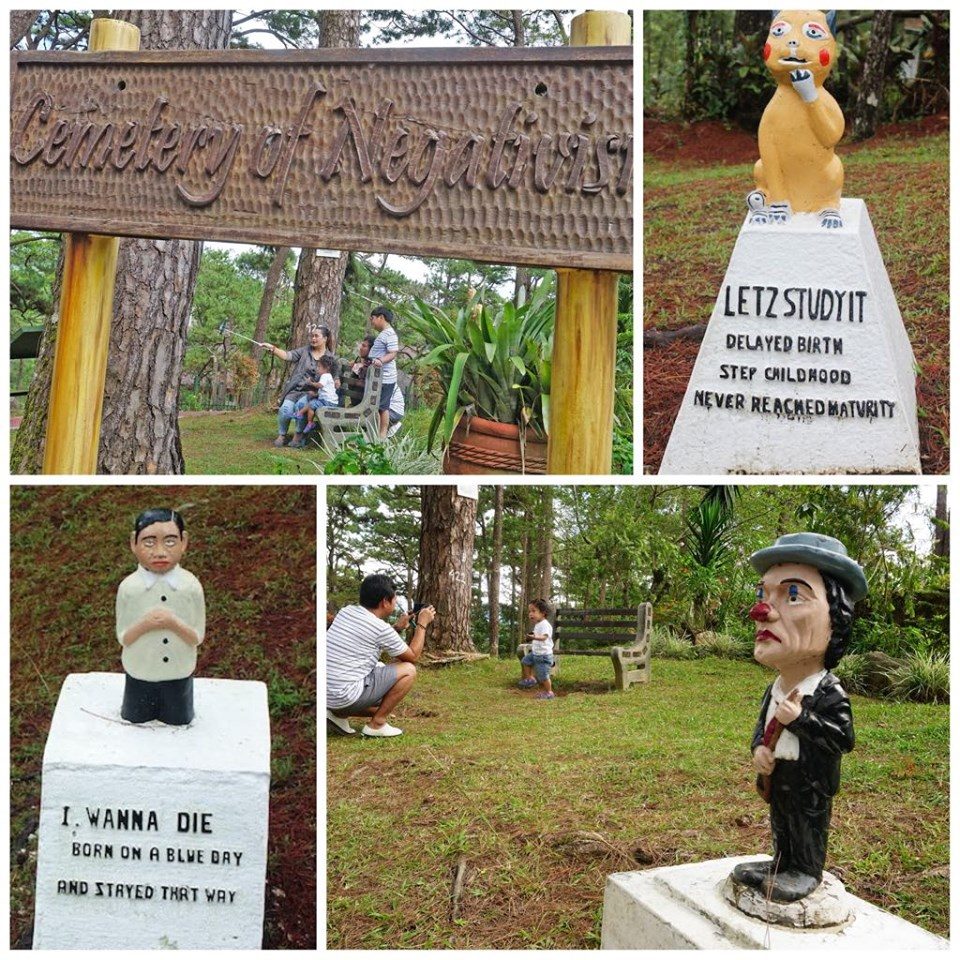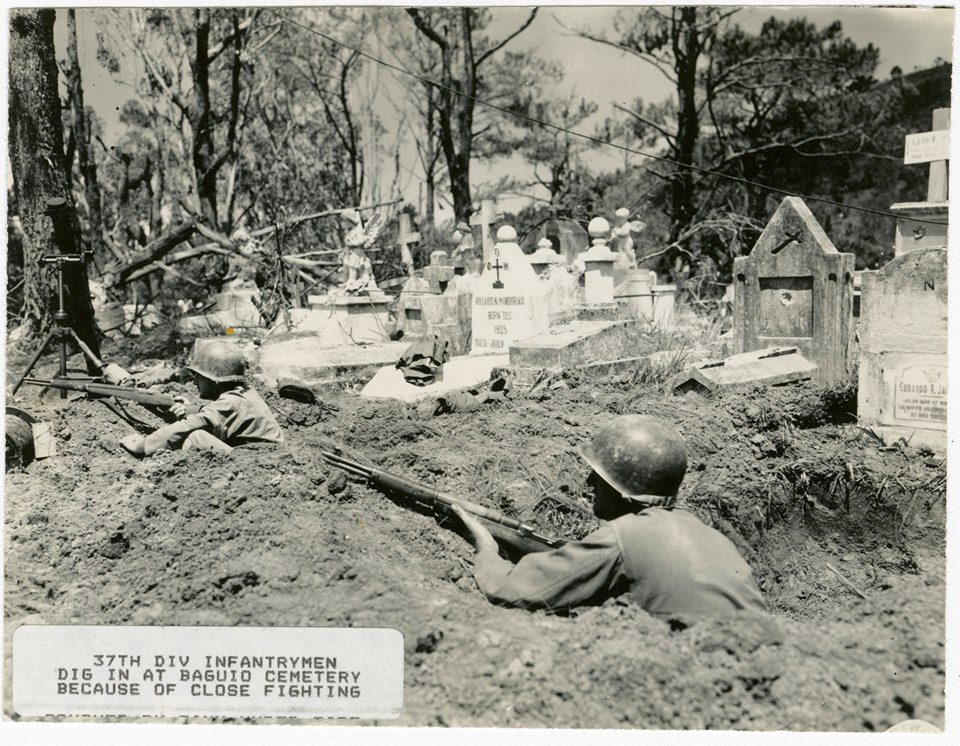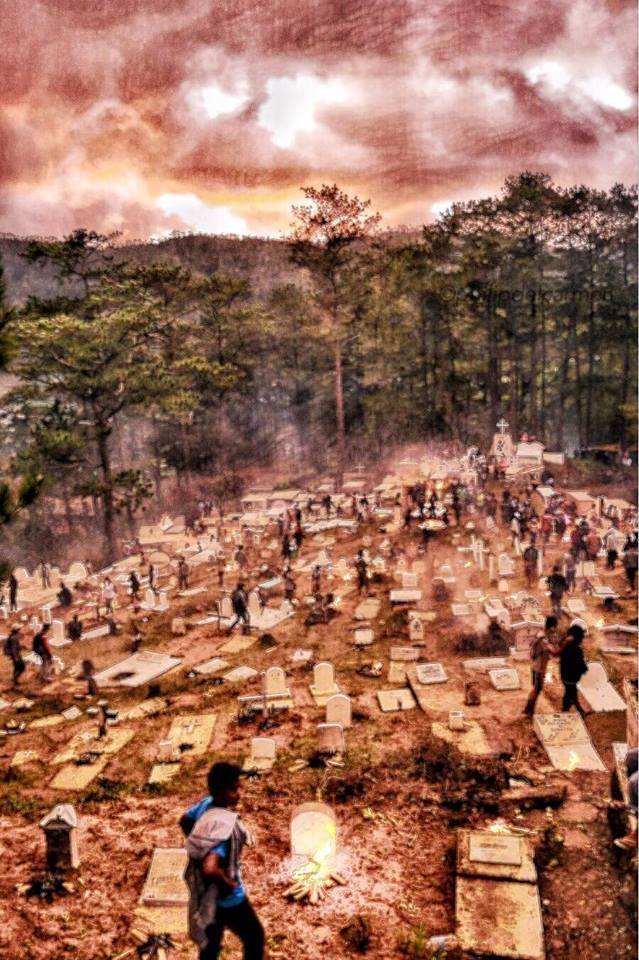SUMMARY
This is AI generated summarization, which may have errors. For context, always refer to the full article.

BAGUIO, Philippines – Coimetrophobia is the fear of cemeteries. I’m not making this up, but there are people who start having palpitations, nausea, dizziness, and the inability to talk or think clearly while nearing the entrance of a cemetery. They must have watched too much zombie films while they were young or just had debauched memories of going to cemeteries.
Here in the Cordillera, I can only recommend a cemetery or two for coimetrophobes.
There is the Lost Cemetery of Negativism inside Camp John Hay with 35 tombs. There are no actual bodies 6 feet under, just your negative thoughts personified. “Itz Not Possible” was “Conceived 11 Nov. 1905 (yet) Still Not Born.” “A Truly Miserable Day” was “Born in gloom, lived without bloom, buried in this tomb.” “Kantdu Nothin” was “Born Dec. 1905-Died June 14, 1903.” “Lettuce Wait for D’ Boss” was “Born August 1888, Died Waiting 1 June, 1903.”
The cemetery was commissioned by then-John Hay commander John Hightower in 1980. The kitschy characters were created by the same lovable guy who made the bigger characters in John Hay’s Mini-Golf Course.
“Negativism is man’s greatest self-imposed infliction, his most limiting factor, his heaviest burden,” the welcome marker says.
If you leave through John Hay’s main gate going to the Philippine Military Academy (PMA), you will pass by one of two Phil-Am veterans cemeteries. There used to be 200 wooden white crosses spaced evenly in the gentle slopes there.
There was the other cemetery with large steel flat crosses also arranged like a graphic paper on a hill. Most of the crosses were stolen over the years. I was told no actual bodies were buried there, but I’m not sure now because of the many haunting stories I heard about them.
Yes, the White Lady of Loakan sometimes hitches a ride there, taxicab drivers would attest.
I remembered a story from my late mother about her riding the PMA bus there and it suddenly stopped at the cemetery. “At last, I saw the Lady of Loakan,” my cousin, who happened to be Environment Secretary Roy Cimatu, was supposed to have shouted then. He was a cadet first class at that time. The lore then was that those who saw The Lady were deemed luckier than others.
Now, to induce your coimetrophobia.
The Baguio Cemetery is one of those haunting cemeteries, especially when the fog comes rolling in. There were huge twisted cypress trees along the entrance and a few pine trees on the hills – as if the place needs more props for the gothic touch. All it needs is history.

The Battle of Baguio from February to April 1945 had its pivotal fight at the cemetery. You would see old photos of American soldiers in foxholes beside crosses at the cemetery. When the Allies arrived in Baguio from the western front, the 6-day battle occurred at the Irigan Gorge and Irisan River, where the cemetery is. This was the last tank-to-tank engagements of the Philippine campaign between the M4 Shermans of the U.S. Army’s Company B, 775th Tank Battalion and Type 97s of the IJA’s 5th Tank Company, 10th Tank Regiment.

Another cemetery to visit in the Cordilleras is the Sagada Episcopalian Cemetery inside the Mission compound. The plots were simple enough, mostly just white crosses on the hill. Except that, during All Saints’ Day, the people would gather the pine needles on the hill and light them. So at dusk, the hill would look like a hundred fog machines with pulsating lights. The people started calling it “Panag-pupuor” or “The Flaming.” Some stupid tour promoters started calling it “The Sagada Fire Festival,” which riled a lot of Sagadanians.
Those who still follow the Sagada animist ways would have their dead buried on the cliffs and inside some of the caves. We remembered a Manila couple’s pre-nuptial shoot inside one of these burial caves. It was professionally well-lit with the soon-to-be-bride and groom holding hands, with the wooden coffins in the background. The Sagadanians offered their congratulations to the soon-to-be corpse couple, and that was that – the photographers and the couple made their apologies and quickly left.
I still wonder if they proceeded with their wedding, though. – Rappler.com
Add a comment
How does this make you feel?
There are no comments yet. Add your comment to start the conversation.